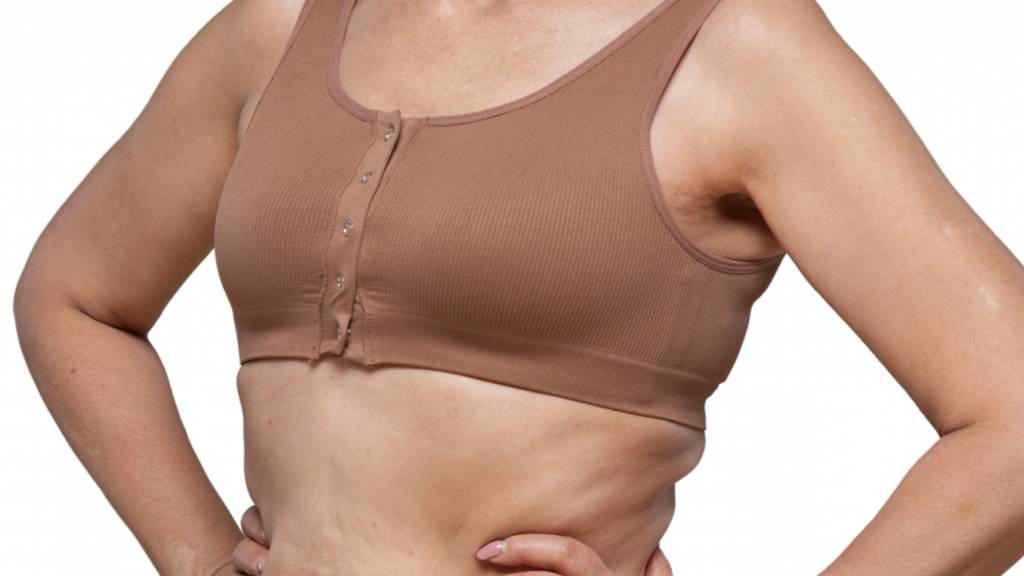Mastectomy: Before and After Surgery
Mastectomy is a critical surgical procedure in the treatment of breast cancer. This operation, which involves the removal of breast tissue, can vary depending on the extent and type of tissue removed. Understanding the different forms of mastectomy, their indications, and the recovery process is essential for patients facing this challenge.
Types of Mastectomy
Mastectomy is not a one-size-fits-all procedure: it comes in several forms, each suited to specific clinical needs. The choice of the most appropriate type depends on factors such as tumor size, location, and the patient’s individual characteristics.
- Total (Simple) Mastectomy: Involves the complete removal of breast tissue, including the skin, nipple, and areola, while preserving the underlying chest muscles and typically not involving axillary lymph nodes. It is often recommended for widespread breast tumors or as a preventive measure in high-risk patients.
- Radical Mastectomy: A more extensive procedure involving the removal of the entire breast, axillary lymph nodes, and sometimes the pectoral muscles. Reserved for cases where the cancer has spread beyond the breast tissue.
- Skin-Sparing Mastectomy: Removes the breast gland and often the nipple-areola complex while preserving most of the skin envelope. This facilitates reconstruction and offers better cosmetic outcomes.
- Subcutaneous Mastectomy: An even more conservative approach where the glandular tissue is removed while preserving the skin and, when possible, the nipple-areola complex. Often used preventively in women with a genetic predisposition to breast cancer.
- Partial Mastectomy (Quadrantectomy): Removes only the portion of the breast affected by the tumor along with a margin of healthy tissue. This less invasive technique is usually followed by radiotherapy to eliminate any remaining cancer cells.
The Essential Role of Post-Operative Bras
Following mastectomy, the healing and recovery process is of utmost importance. In this phase, post-operative bras play a crucial role, offering both physical support and psychological comfort.
Functions and Benefits:
- Gentle yet effective chest support, reducing complications and promoting healing.
- Housing for external prostheses or padding, helping restore symmetry and natural appearance.
- Protection of scars and surgical drains, avoiding excessive pressure.
- Reduction of lymphedema risk, especially after lymph node removal.
- Improved overall comfort, reducing post-operative pain and facilitating movement.
Key Features of Post-Mastectomy Bras
These bras are specifically designed to meet the needs of women after breast surgery and offer a range of specialized features:
- Materials: Soft, breathable, hypoallergenic fabrics with no abrasive seams. Some models also include antibacterial fabrics.
- Wide, adjustable straps: Distribute weight evenly and reduce shoulder pressure, crucial in the presence of lymphedema.
- Front closures: Often equipped with hooks or zippers for easy wearing, especially helpful when arm mobility is limited.
- No underwires: To prevent irritation or trauma at the surgical site.
- Built-in pockets: On both sides, allowing for discreet and stable placement of external prostheses or padding.
- High chest and underarm coverage: Supports and protects healing tissue.
- Discreet, elegant design: Aesthetically pleasing options help patients feel comfortable in their bodies again.
Usage Timeline
Post-surgical bras are generally introduced a few days after surgery, once drains are removed. The exact timing is determined by the surgeon or oncologist based on the patient’s condition.
Their continuous use is often recommended for several weeks or months, depending on the surgery and whether breast reconstruction is planned. During this period, the bra stabilizes the surgical area, minimizes complications, and promotes optimal recovery.
Early guidance from trained professionals helps women choose the right bra from the start, ensuring maximum comfort and physical and emotional well-being.
External Breast Prostheses and Specialized Bras
External breast prostheses are the most effective option for many women who choose not to undergo immediate or delayed reconstruction. Made of medical-grade silicone, they mimic the weight, shape, and feel of natural breasts, supporting body image recovery and psychological well-being.
These prostheses are worn inside dedicated bras with built-in pockets that provide secure, discreet support. The bras combine aesthetic appeal, function, and comfort, allowing women to move freely and confidently in daily life.
Professional guidance remains essential during this phase as well, to find comfortable, feminine undergarments tailored to each individual.
Swim Prostheses and Specialized Swimwear
Women wishing to maintain an active lifestyle after mastectomy can choose swimming prostheses, designed for water use. Made of chlorine- and saltwater-resistant materials, they are lighter and perforated to allow water drainage and fast drying.
These are paired with post-mastectomy swimsuits, which include internal pockets, flat seams, and reinforced straps for secure and stable wear in the water. This swimwear allows women to enjoy leisure and sports without sacrificing comfort or safety, greatly contributing to quality of life.
Final Thoughts: Quality of Life After Mastectomy
Mastectomy marks a major transition in a woman’s life, with impacts that go far beyond the physical. The use of post-operative bras, external prostheses, and lifestyle solutions like swimwear and swim prostheses forms part of a broader care strategy not just for physical healing, but also for restoring emotional and psychological well-being.
These tools, tailored to each patient’s needs, help re-establish a sense of normalcy, boost self-esteem, and support women in reclaiming their bodies and their daily lives. A personalized approach is the key to successfully navigating life after mastectomy.
Let our specialists support you: visit us at Ortopedia Zambelli, Via Taramelli 21/23 in Bergamo, or get in touch:
? +39 035 212110 (Monday–Saturday, 9:00–12:30 and 15:00–19:00)
? info@ortopediazambelli.it
All the news

